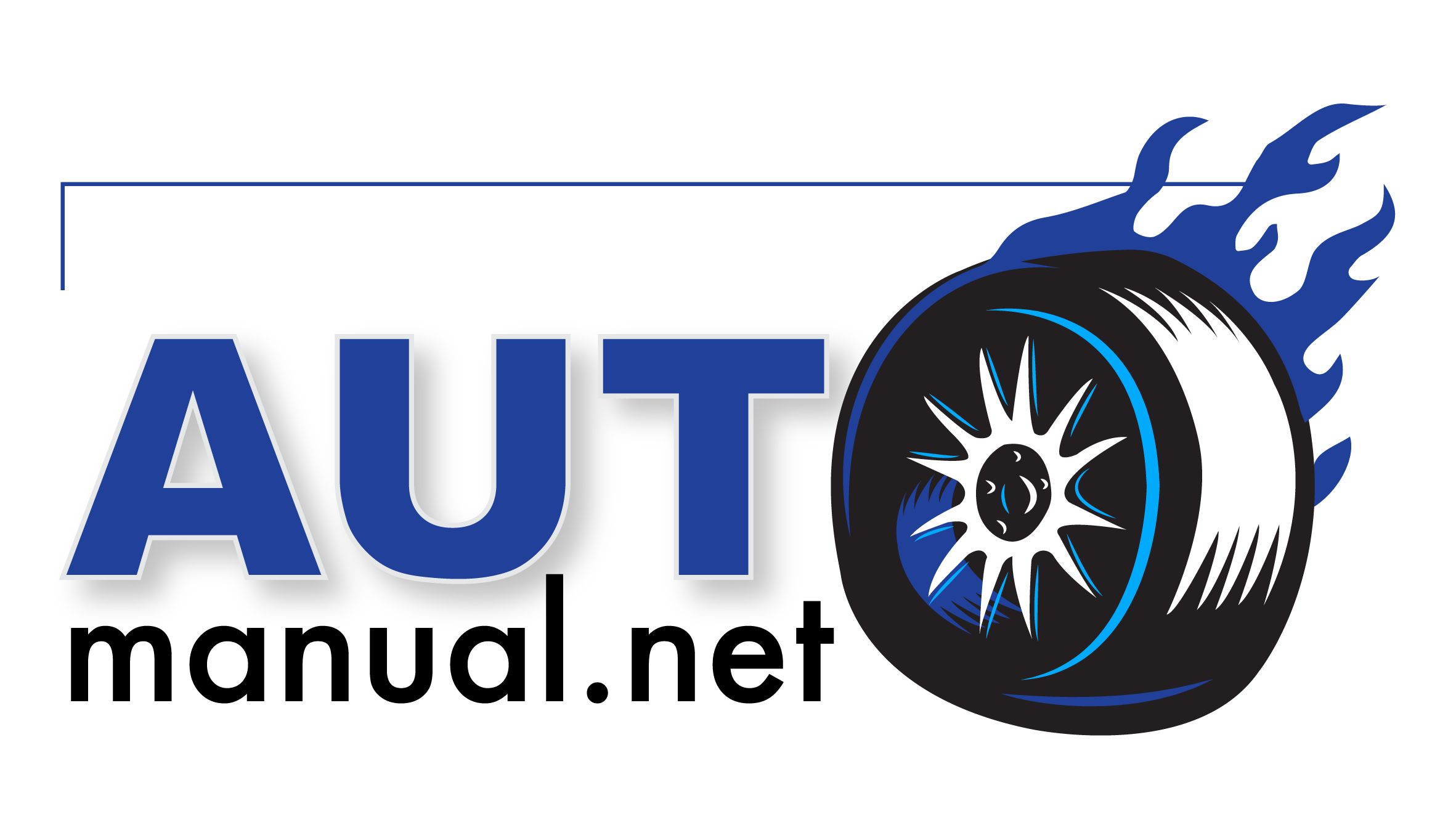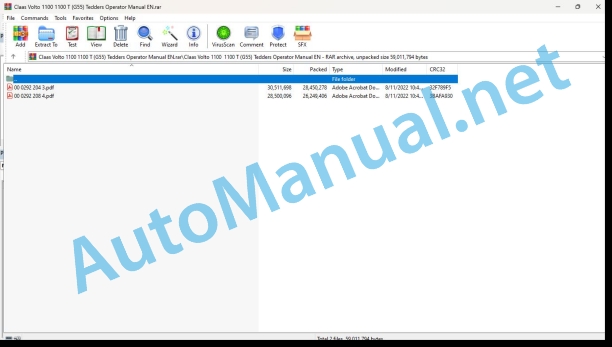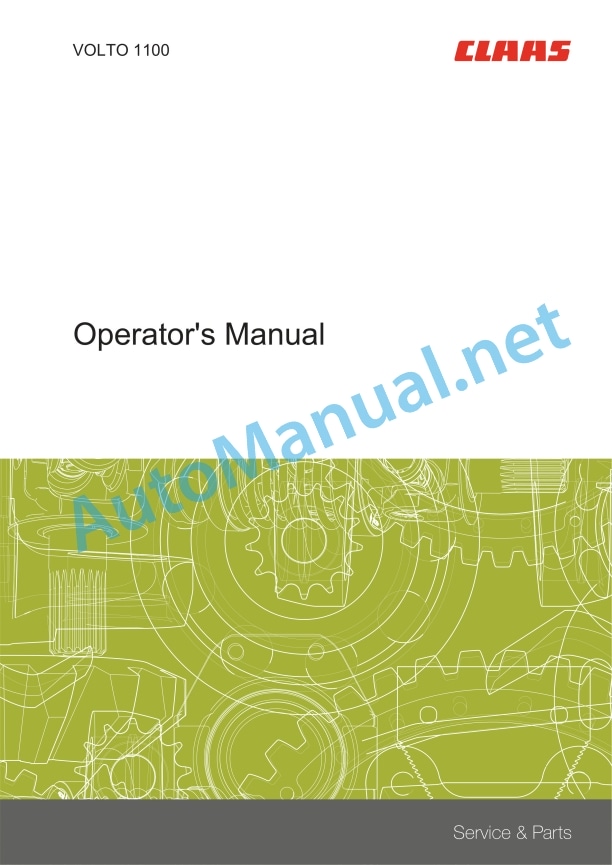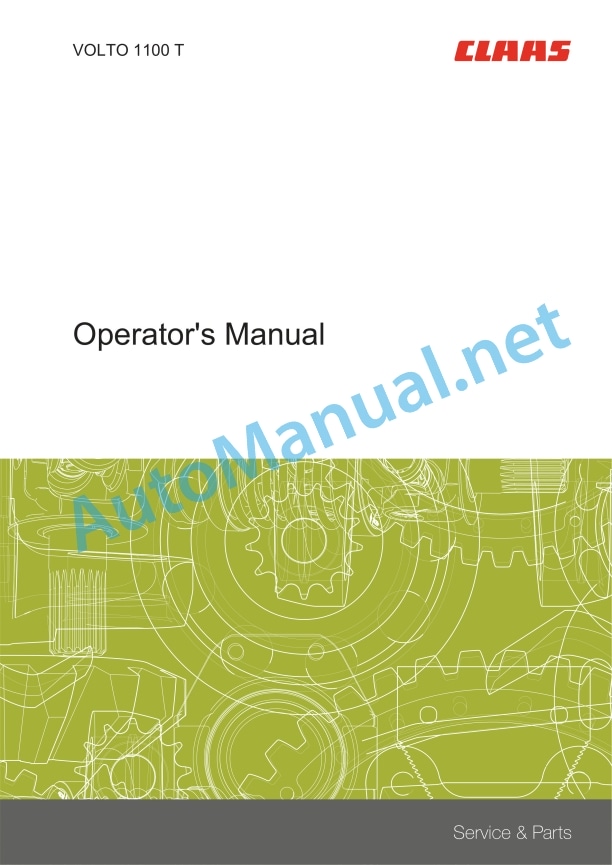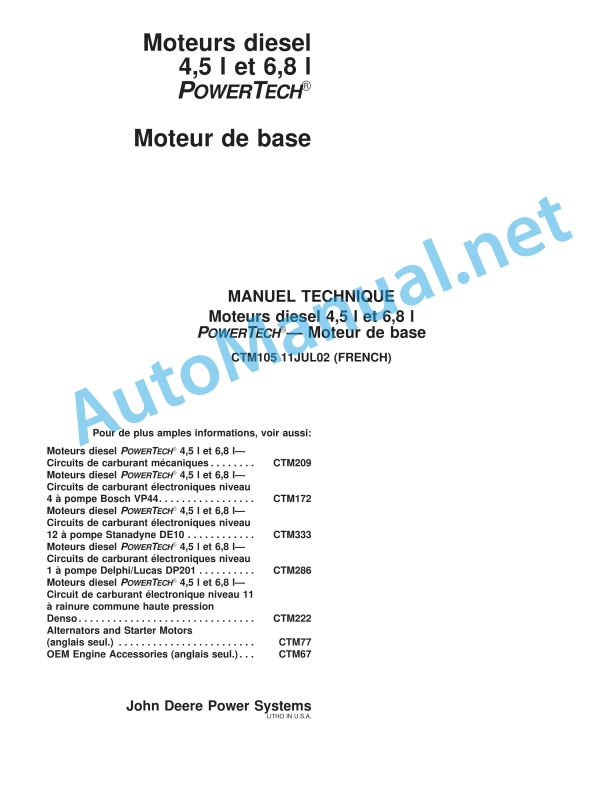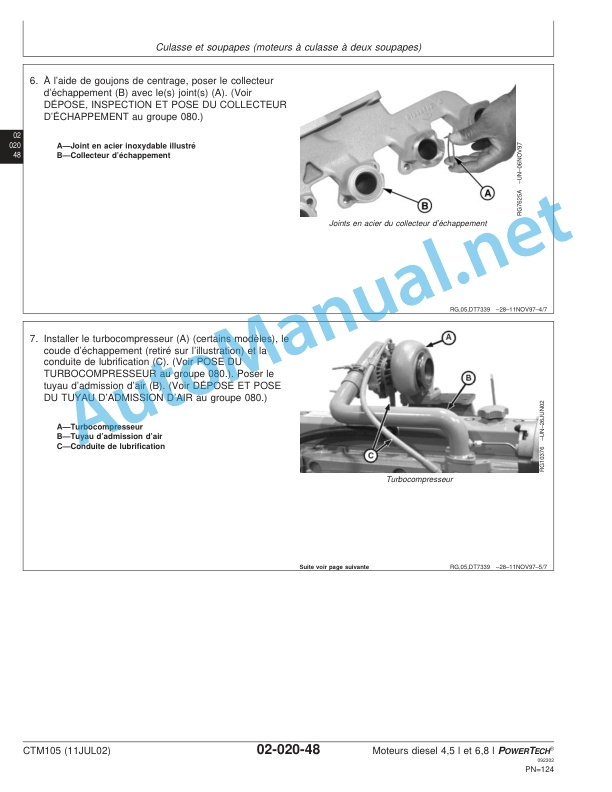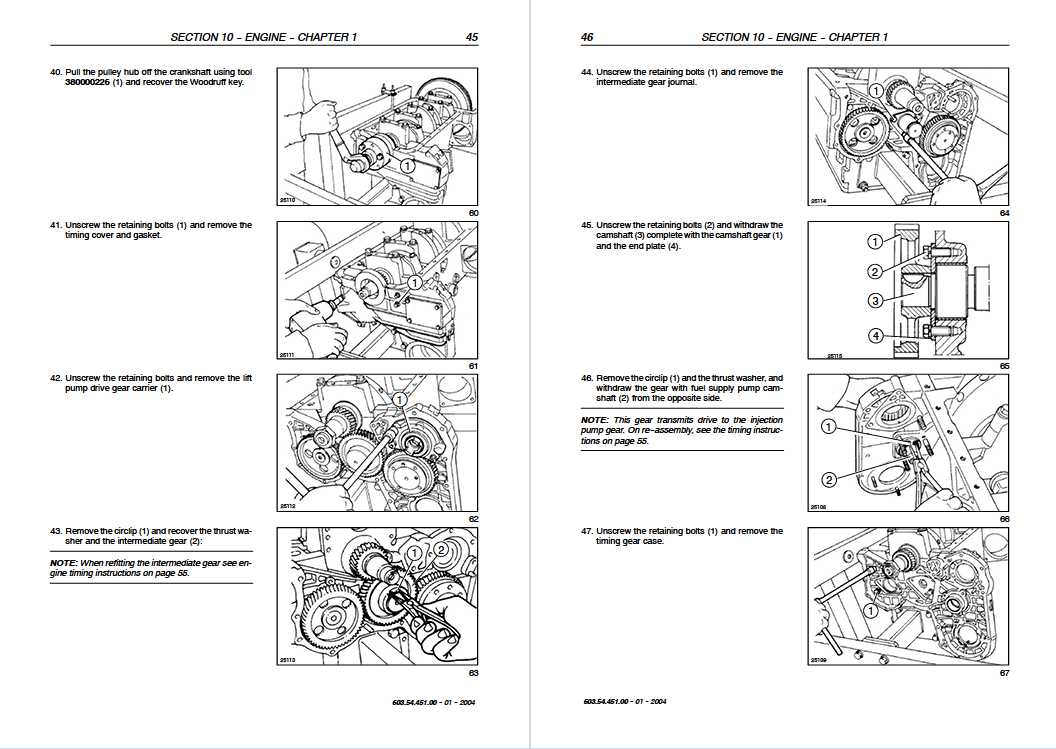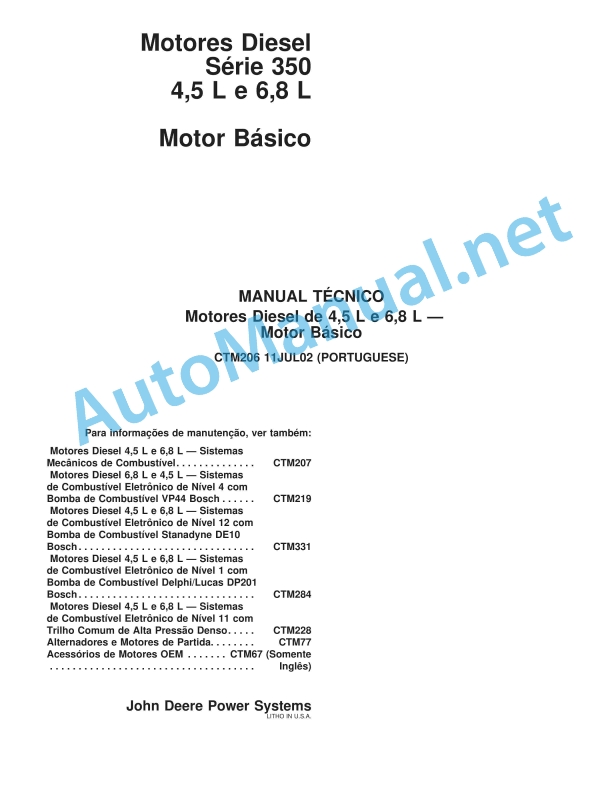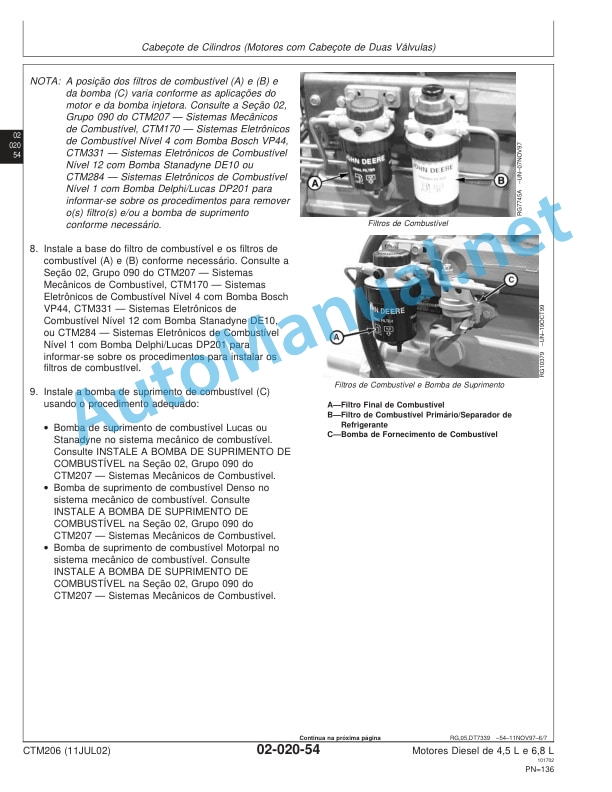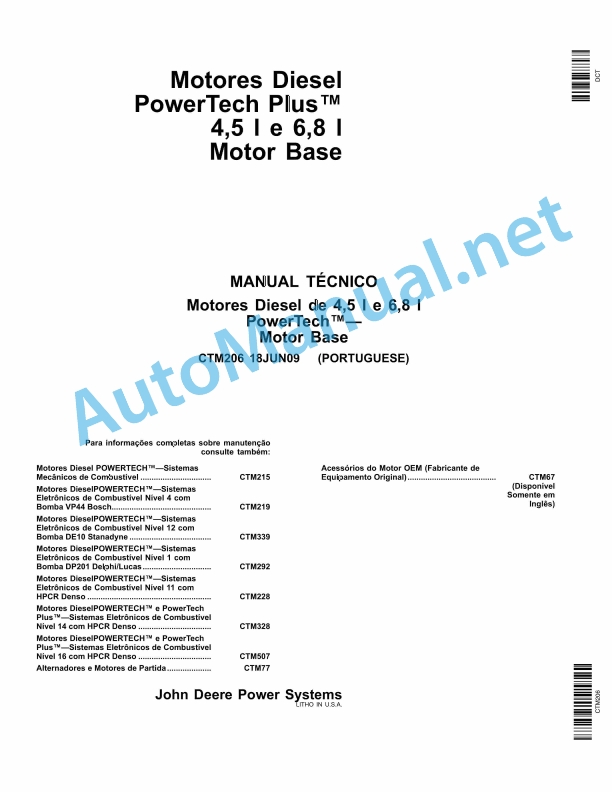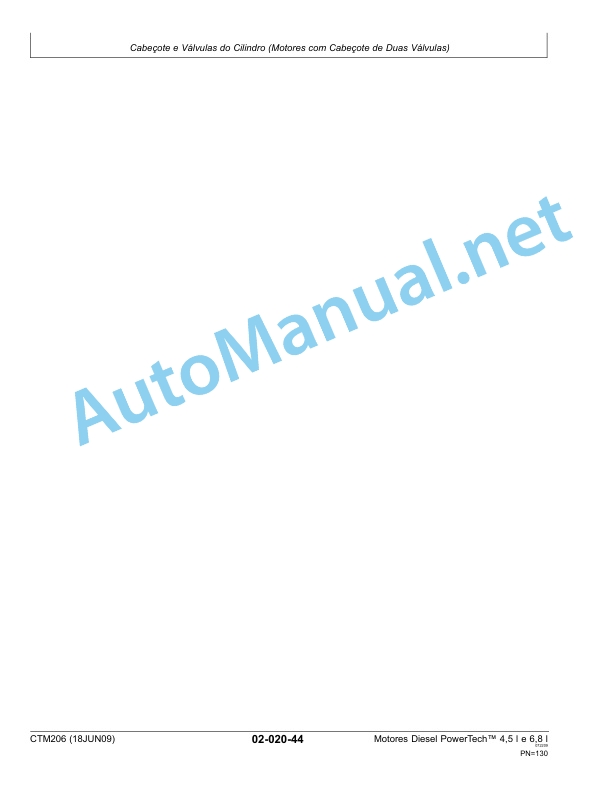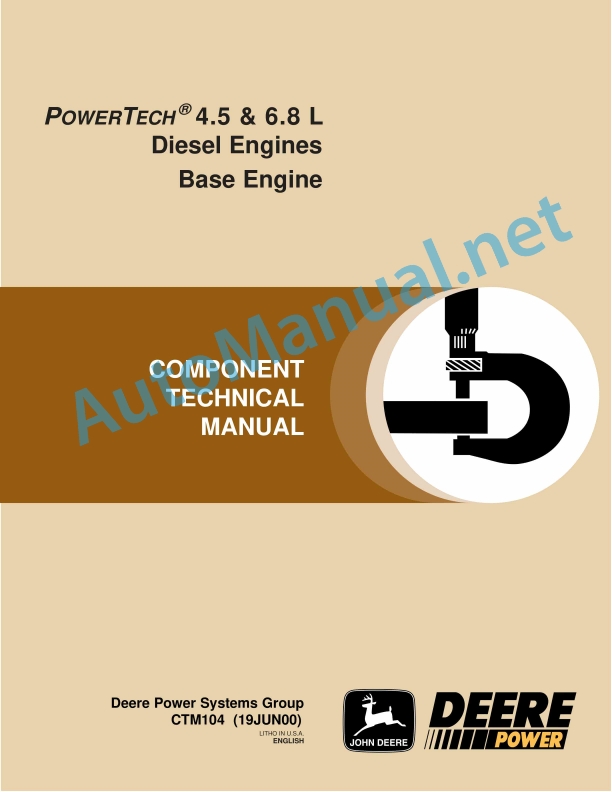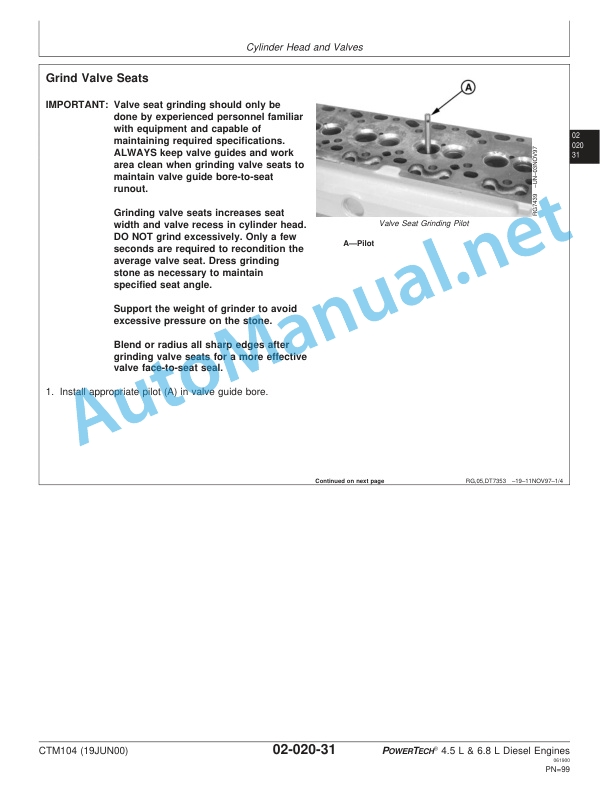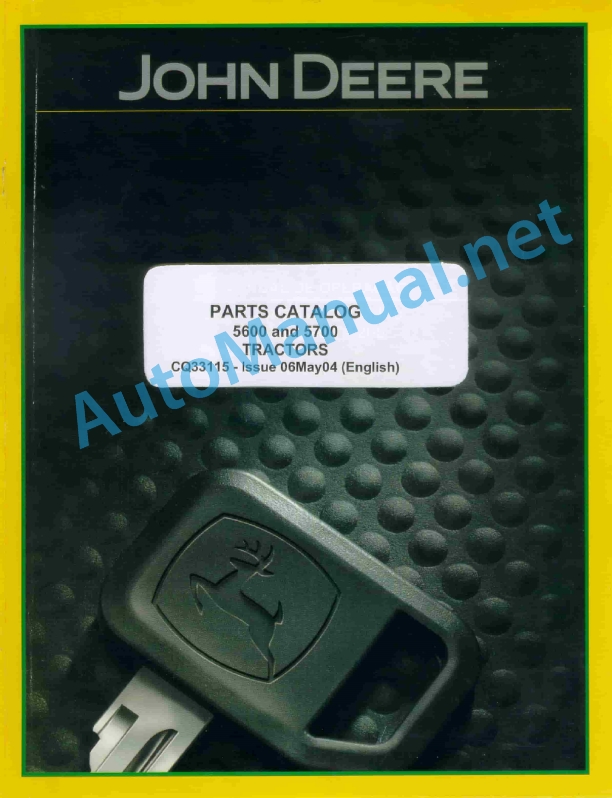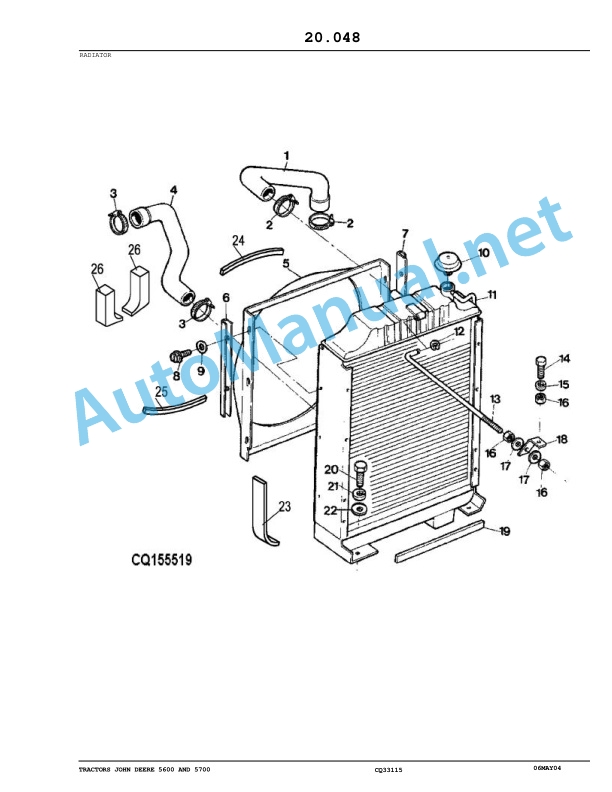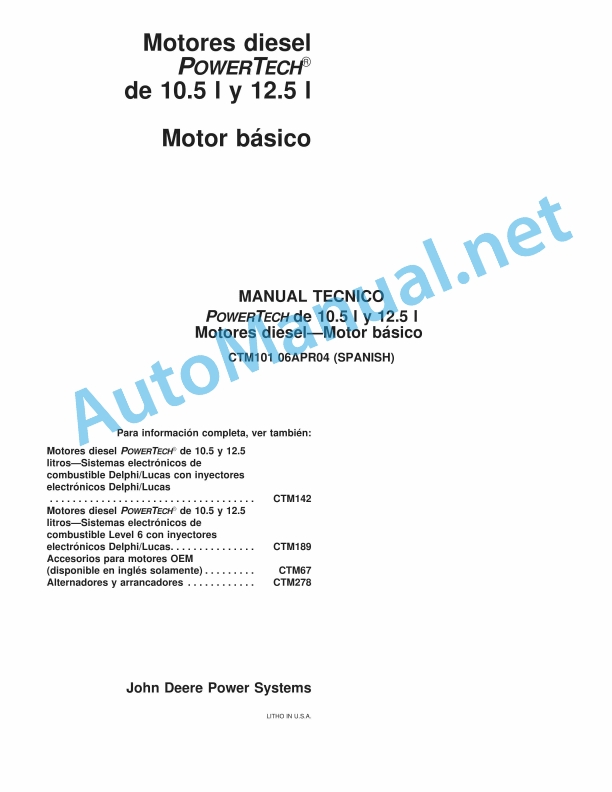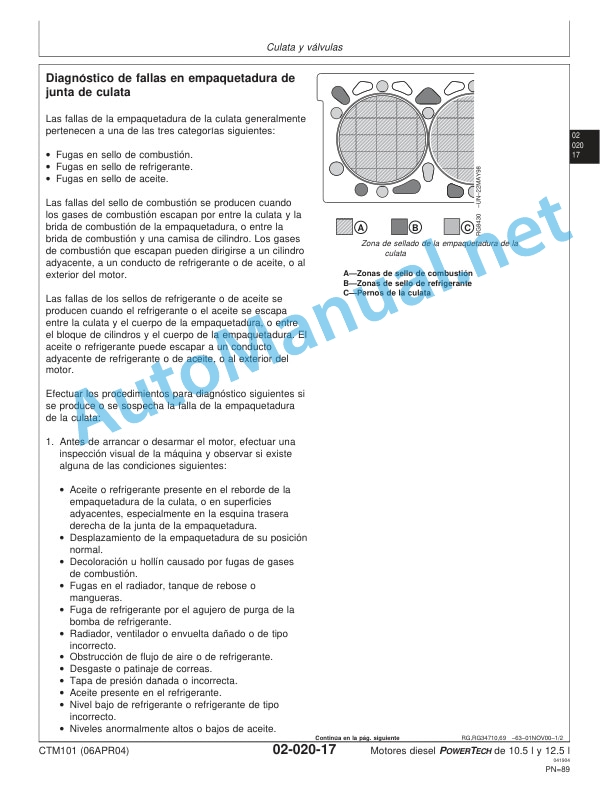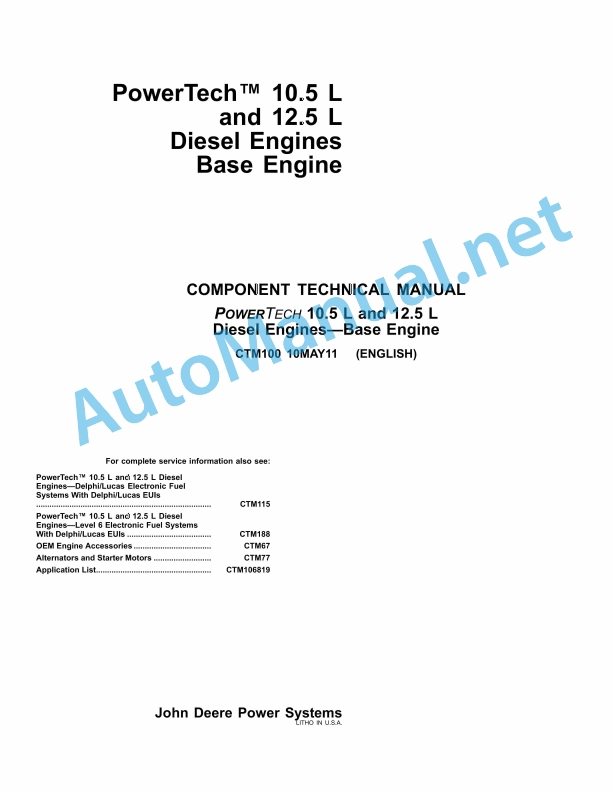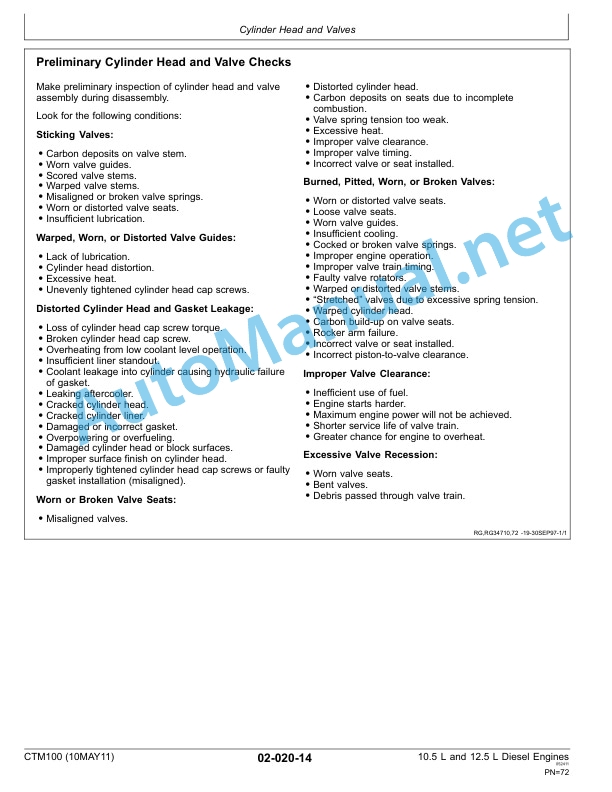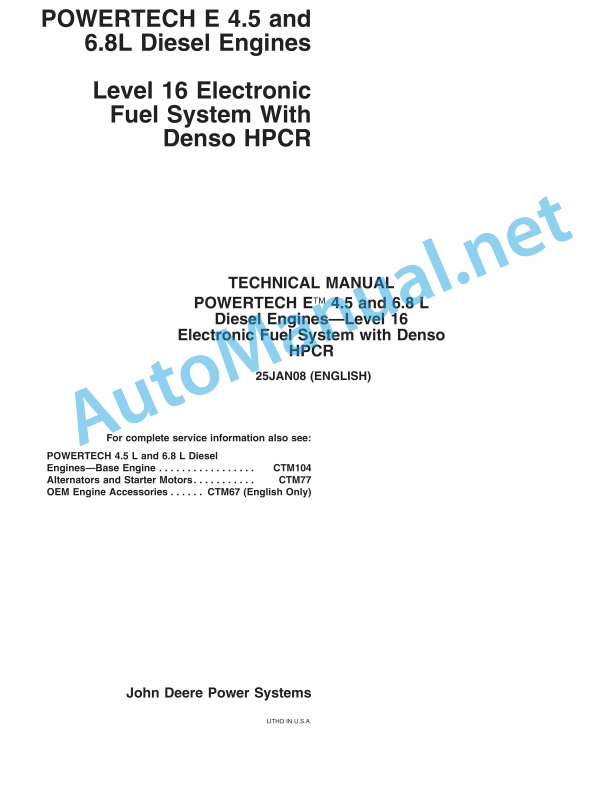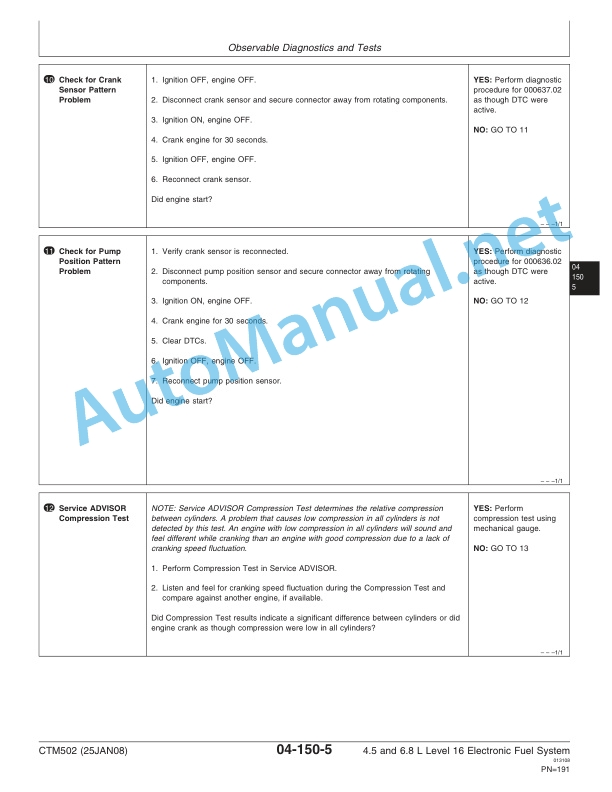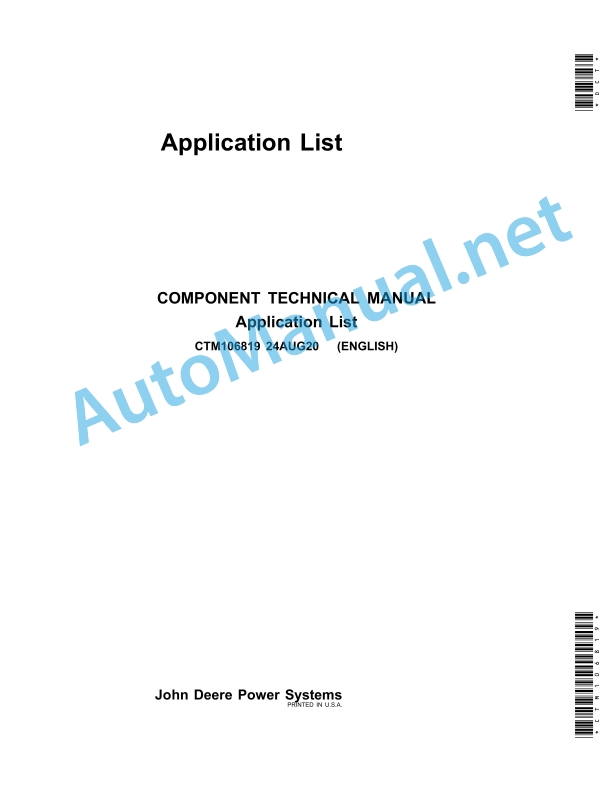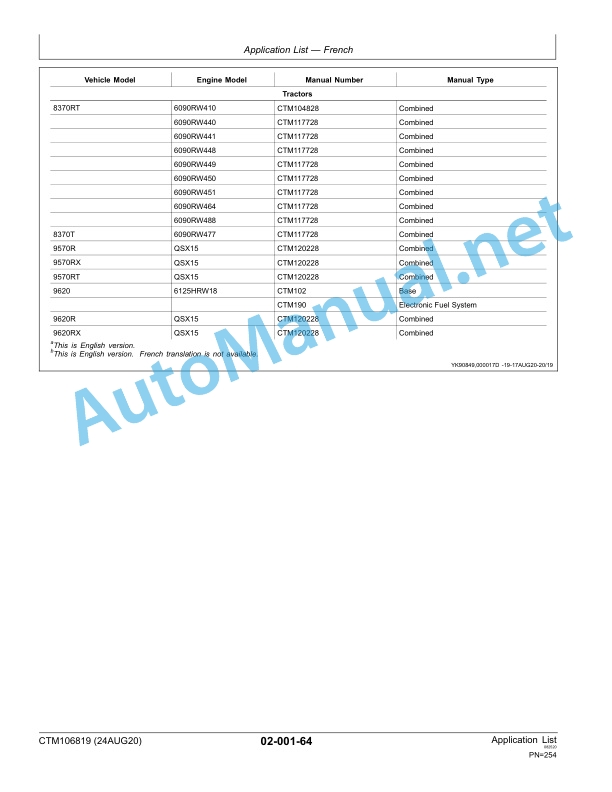Claas Volto 1100 1100 T (G55) Tedders Operator Manual EN
$50.00
- Model: Volto 1100 1100 T (G55) Tedders
- Type Of Manual: Operator Manual
- Language: EN
- Format: PDF(s)
- Size: 52.2 MB
File List:
00 0292 204 3.pdf
00 0292 208 4.pdf
00 0292 204 3.pdf:
VOLTO 1100
Table of contents
1 Introduction
1.1 Notes on the manual
1.1.1 Validity of manual
1.1.2 Information about this Operator’s Manual
1.1.3 Symbols and notes
1.1.4 Optional equipment
1.1.5 Qualified specialist workshop
1.1.6 Warranty notes
1.1.7 Spare parts and technical questions
1.2 Intended use
1.2.1 Intended use
1.2.2 Reasonably foreseeable misuse
2 Safety
2.1 Identifying warnings
2.1.1 Hazard signs
2.1.2 Signal word
2.2 Safety rules
2.2.1 Importance of Operator’s Manual
2.2.2 Observing safety decals and warnings
2.2.3 Requirements for all persons working with the machine
2.2.4 Children in danger
2.2.5 Hazard areas
2.2.6 Presence between tractor and machine
2.2.7 Persons riding on the machine
2.2.8 Hitching the tractor to the machine
2.2.9 Danger of injury from rotating shafts
2.2.10 Structural alterations
2.2.11 Optional equipment and spare parts
2.2.12 Control of the machine while it is running
2.2.13 Operation only after proper putting into operation
2.2.14 Technical condition
2.2.15 Danger from damage to the machine
2.2.16 Complying with technical limit values
2.2.17 Danger from continued running of machine parts
2.2.18 Keeping safety devices functional
2.2.19 Personal protective equipment
2.2.20 Wearing suitable clothing
2.2.21 Removing dirt and loose objects
2.2.22 Preparing the machine for road travel
2.2.23 Risks when driving on the road and in the field
2.2.24 Parking the machine safely
2.2.25 Unsupervised parking
2.2.26 Unsuitable operating utilities
2.2.27 Safe handling of operating and auxiliary utilities
2.2.28 Environmental protection and disposal
2.2.29 Fire prevention
2.2.30 Lethal electrocution from overhead lines
2.2.31 Pressurised fluids
2.2.32 Hot surfaces
2.2.33 Working on machine only after shutting it down
2.2.34 Maintenance work and repairs
2.2.35 Raised machine parts and loads
2.2.36 Danger from welding work
2.3 Safety decals on the machine
2.3.1 Structure of safety decals
2.3.2 Safety decals on the machine
3 Machine description
3.1 Overview and method of operation
3.1.1 Overview of VOLTO 1100
3.1.2 Mode of operation of VOLTO 1100
3.2 Optional machine equipment
3.2.1 Slip yoke kit*
3.2.2 Hydraulics connecting parts, 3-fold*
3.2.3 Lighting adapter for USA*
3.2.4 Tine loss protection ø 9.5 mm*
3.2.5 Tine loss protection ø 10.5 mm*
3.2.6 Swathing curtain, hydraulic*
3.2.7 Sensor wheel*
3.2.8 Spare wheel, 18.5×8.5-8*
3.2.9 Spare wheel, 16×6.5-8*
3.2.10 Legal equipment: France*
3.2.11 SMV triangle*
3.2.12 Night swathing gearbox*
3.2.13 Headland hydraulic lift*
3.2.14 Stripper*
3.3 Identification plates and vehicle identification number
3.3.1 Machine identification plate
3.4 Information on theaine
3.4.1 Decal
4 Operating and display elements
4.1 Controls
4.1.1 Hydraulic hose
4.1.2 Stands
4.1.3 Castor guide wheel*
5 Technical specifications
5.1 VOLTO 1100
5.1.1 Dimensions
5.1.2 Weights
5.1.3 Requirements for the tractor
5.1.4 Sound pressure level
5.1.5 Version
5.1.6 Tyre dimensions
5.1.7 Tyre pressure
5.1.8 Lubricants
6 Machine preparation
6.1 Switching off and securing the machine
6.1.1 Switching off and securing the tractor and machine
6.1.2 Securing the raised machine
6.2 Adapting the tractor
6.2.1 Checking the ballasting of the tractor
Calculating the minimum front ballast
Calculating the minimum rear ballast
Calculating the actual front axle load
Calculating the actual total weight
Calculating the actual rear axle load
Calculation table
6.2.2 Calculating the minimum front ballast
6.2.3 Calculating the minimum rear ballast
6.2.4 Calculating the actual front axle load
6.2.5 Calculating the actual total weight
6.2.6 Calculating the actual rear axle load
6.2.7 Calculation table
6.3 Adapting the machine
6.3.1 Universal drive shaft – checking length
6.3.2 Adapting the universal drive shaft length
6.3.3 Fitting the universal drive shaft to the machine
6.4 Hitching the machine
6.4.1 Hitching up the lower link
6.4.2 Hitching up the upper link
If the castor guide wheel is used*
6.4.3 Installing the universal drive shaft
6.4.4 Swinging up the stands
6.4.5 Connecting the hydraulic hose lines
6.4.6 Connecting the hydraulic hose line for the swathing curtain*
6.4.7 Connecting the lighting cable
6.4.8 Stowing the wheel chocks*
6.5 Unhitching the machine
6.5.1 Swinging the stands down
6.5.2 Positioning the wheel chocks*
6.5.3 Disconnecting the lighting cable
6.5.4 Disconnecting the hydraulic hoses
6.5.5 Disconnecting the hydraulic hose line for the swathing curtain*
6.5.6 Removing the universal drive shaft
6.5.7 Unhitching the headstock
6.6 Prepare road travel
6.6.1 General safety precautions
6.6.2 Closing the shut-off tap
6.7 Loading the machine
6.7.1 Lifting the machine
7 Operation
7.1 General safety precautions
7.1.1 Prior to operation
7.2 Driving on the road
7.2.1 Driving on public roads
7.3 Fieldwork settings
7.3.1 Adjusting the throw angle
7.3.2 Adjusting the 16° spreading angle
7.3.3 Adjusting the 12° spreading angle
7.3.4 Adjusting the tines
7.3.5 Adjusting the spreading pattern
7.3.6 Setting the working height
7.3.7 Adjusting the working height with the castor guide wheel*
7.3.8 Adjusting the swathing curtain*
7.3.9 Adjusting the headland hydraulic lift*
Basic setup
7.3.10 Removing wrap-around problems on the wheel axles
7.4 Fieldwork
7.4.1 To be observed during fieldwork
7.4.2 Opening the shut-off tap
7.4.3 Folding to working position
7.4.4 Folding to transport position
7.4.5 Machine use
7.4.6 Tdin 7.4.7 Turning
7.4.8 Swath spreading
7.4.9 Night swaths
7.4.10 Swath turning
7.4.11 Operating the headland hydraulic lift*
7.4.12 Tedding with the swathing curtain*
7.4.13 Lifting the machine for tight bends and when reversing
8 Faults and remedies
8.1 Overview of problems
8.1.1 Problems on the machine
9 Maintenance
9.1 Maintenance Information
9.1.1 General warnings
9.1.2 Electrical system
9.1.3 Protective guards
9.1.4 Spare parts
9.1.5 Unbalance
9.1.6 Compressed air and water
9.1.7 Wheels
9.1.8 Burn prevention
9.1.9 Oils
9.1.10 Preventing fire and explosion
9.1.11 Lines, tubes and hoses
9.2 Maintenance interval overview
9.2.1 Dealing with maintenance intervals
9.2.2 Before the harvest
9.2.3 After the first 10 operating hours
9.2.4 After the first 50 operating hours
9.2.5 Every 50 operating hours
9.2.6 Every 100 operating hours
9.2.7 Every 500 operating hours or annually
9.2.8 Every 5 years
9.2.9 As needed
9.2.10 After the harvest
9.3 Maintenance operations in general
9.3.1 Clean the machine
9.3.2 Preserve the machine
9.3.3 Check the fastening material
9.4 Gearbox
9.4.1 Checking the gearbox for leaks
9.4.2 Main gearbox
9.4.3 Changing the lubricant of the rotor gearboxes
9.4.4 Check the night swathing gearbox* oil level
9.4.5 Changing the night swathing gearbox* oil
9.5 Clutch
9.5.1 Checking the overload clutch
9.5.2 Venting the friction clutch
9.5.3 Checking the friction discs
9.6 Universal drive shaft
9.6.1 Servicing the universal drive shafts
9.6.2 Removing the universal drive shaft guard
9.6.3 Installing the universal drive shaft guard
9.7 Chassis
9.7.1 Check the tyre pressure
9.7.2 Changing a wheel on the rotor chassis
9.7.3 Changing the castor guide wheel*
9.7.4 Rotor chassis: Retightening the wheel nuts
9.7.5 Check the castor guide wheel* nut
9.8 Drives
9.8.1 Greasing the PERMALINK finger clutches
9.9 Hydraulic system
9.9.1 Hydraulic system maintenance
9.9.2 Checking the hydraulic hoses
9.9.3 Accumulator
9.9.4 Checking the hydraulic cylinders
9.10 Electric and electronic system
9.10.1 Lighting equipment defective
9.11 Frame
9.11.1 Check the stop positions of the inside folding joints
9.11.2 Checking the tension springs
Tension springs of the rotor arms
9.11.3 Checking the outer arm locking mechanism
9.11.4 Check the bolts on the longitudinal beam
9.12 Tine carrier
9.12.1 Checking the tines
9.13 Lubrication plan
9.13.1 Grease all grease points every 50 operating hours
9.13.2 Grease all grease points every 100 operating hours
10 Putting out of operation and disposal
10.1 General information
10.1.1 Removal from service and disposal
11 EC declaration of conformity
11.1 VOLTO 1100
11.1.1 EC declaration of conformity
11.1.2 UK declaration of conformity
12 Technical terms and abbreviations
12.1 Terms and explanations
12.1.1 Technical words
12.1.2 Abbreviations
00 0292 208 4.pdf:
VOLTO 1100 T
Table of contents
1 Introduction
1.1 Notes on the manual
1.1.1 Validity of the manual
1.1.2 Information about this Operator’s Manual
1.1.3 Symbols and notes
1.1.4 Optional equipment
1.1.5 Qualified specialist workshop
1.1.6 Maintenance notes
1.1.7 Warranty notes
1.1.8 Spare parts and technical questions
1.2 Intended use
1.2.1 Intended use
1.2.2 Reasonably foreseeable misuse
2 Safety
2.1 Identifying warnings
2.1.1 Hazard signs
2.1.2 Signal word
2.2 Safety rules
2.2.1 Importance of Operator’s Manual
2.2.2 Observing safety decals and warnings
2.2.3 Requirements for all persons working with the machine
2.2.4 Children in danger
2.2.5 Hazard areas
2.2.6 Presence between tractor and machine
2.2.7 Persons riding on the machine
2.2.8 Hitching the tractor to the machine
2.2.9 Danger of injury from rotating shafts
2.2.10 Structural alterations
2.2.11 Optional equipment and spare parts
2.2.12 Control of the machine while it is running
2.2.13 Operation only after proper putting into operation
2.2.14 Technical condition
2.2.15 Danger from damage to the machine
2.2.16 Complying with technical limit values
2.2.17 Danger from continued running of machine parts
2.2.18 Keeping safety devices functional
2.2.19 Personal protective equipment
2.2.20 Wearing suitable clothing
2.2.21 Removing dirt and loose objects
2.2.22 Preparing the machine for road travel
2.2.23 Risks when driving on the road and in the field
2.2.24 Parking the machine safely
2.2.25 Unsupervised parking
2.2.26 Unsuitable operating utilities
2.2.27 Safe handling of operating and auxiliary utilities
2.2.28 Environmental protection and disposal
2.2.29 Fire prevention
2.2.30 Lethal electrocution from overhead lines
2.2.31 Pressurised fluids
2.2.32 Hot surfaces
2.2.33 Working on machine only after shutting it down
2.2.34 Maintenance work and repairs
2.2.35 Raised machine parts and loads
2.2.36 Danger from welding work
2.3 Safety decals on the machine
2.3.1 Structure of safety decals
2.3.2 Safety decals on the machine
3 Machine description
3.1 Overview and method of operation
3.1.1 Machine overview
3.1.2 Function of machine
3.2 Optional machine equipment
3.2.1 Slip yoke kit*
3.2.2 Hydraulics connecting parts, 3-fold*
3.2.3 Tine loss protection ø 9.5 mm*
3.2.4 Tine loss protection ø 10.5 mm*
3.2.5 Swathing curtain, hydraulic*
3.2.6 Sensor wheel*
3.2.7 Spare wheel, 16×6.5-8*
3.2.8 Spare wheel, 18.5×8.5-8*
3.2.9 Legal technical equipment for the European Union*
3.2.10 SMV triangle*
3.2.11 Nighttime swathing gearbox
3.2.12 Headland hydraulic lift*
3.2.13 Stripper*
3.3 Identification plates and vehicledentification number
3.3.1 Machine identification plate
3.3.2 Machine identificati plate
3.4 Information on the machine
3.4.1 Stickers on the machine
4 Operating and display elements
4.1 Controls
4.1.1 Hydraulic hose
4.1.2 Castor guide wheel*
4.1.3 Headland hydraulic lift*
5 Technical specifications
5.1 VOLTO 1100 T
5.1.1 Dimensions
5.1.2 Weights
5.1.3 Requirements for the tractor
5.1.4 Sound pressure level
5.1.5 Version
5.1.6 Tyre size
5.1.7 Tyre pressure
5.1.8 Lubricants
6 Machine preparation
6.1 Switching off and securing the machine
6.1.1 Switching off and securing the tractor and machine
6.1.2 Securing the raised machine
6.2 Adapting the tractor
6.2.1 Checking the protective guard on the tractor PTO shaft
6.3 Adapting the machine
6.3.1 Checking the universal drive shaft length
Shortest working position of the universal drive shaft
Longest working position of the universal drive shaft
6.3.2 Adapting the universal drive shaft length
6.3.3 Fitting the universal drive shaft to the machine
6.4 Hitching the machine
6.4.1 Removing the safety lock*
6.4.2 Hitching up the hitch bracket
6.4.3 Installing the universal drive shaft
6.4.4 Fitting the safety chain*
6.4.5 Raising the stand
6.4.6 Connecting the hydraulic hose lines
6.4.7 Connecting the hydraulic hose line for the swathing curtain*
6.4.8 Connecting the lighting cable
6.4.9 Stowing the wheel chocks
6.5 Unhitching the machine
6.5.1 Positioning the wheel chock at the wheel
6.5.2 Disconnecting the lighting cable
6.5.3 Disconnecting the hydraulic hoses
6.5.4 Disconnecting the hydraulic hose line for the swathing curtain*
6.5.5 Extending the stand
6.5.6 Disconnecting the safety chain*
6.5.7 Removing the universal drive shaft
6.5.8 Unhitching headstock
6.5.9 Attaching the safety lock*
6.6 Prepare road travel
6.6.1 Folding in the hydraulic swathing curtain*
6.6.2 Folding the machine into the transport position
6.6.3 Closing the shut-off tap
6.6.4 Performing checks prior to road travel
6.7 Preparing fieldwork
6.7.1 Opening the shut-off tap
6.7.2 Folding the machine to the working position
6.7.3 Folding out the hydraulic swathing curtain*
6.8 Loading the machine
6.8.1 Lifting the machine
7 Operation
7.1 Driving on the road
7.1.1 Driving on public roads
7.2 Fieldwork settings
7.2.1 Adjusting the throw angle
7.2.2 Adjusting the 16° spreading angle
7.2.3 Adjusting the 12° spreading angle
7.2.4 Adjusting the spreading pattern
7.2.5 Adjusting the tines
7.2.6 Setting the working height
7.2.7 Adjusting the working height with the castor guide wheel*
7.2.8 Adjusting the hydraulic swathing curtain*
7.2.9 Adjusting the headland hydraulic lift*
Basic setup
7.2.10 Removing wrap-around problems on the wheel axles
7.3 Fieldwork
7.3.1 Folding the machine into the transport position
7.3.2 Folding the machine the working position
7.3.3 Machine use
7.3.4 Tedding
7.3.5 Turning
7.3.6 Swh spreading
7.3.7 Night swaths
7.3.8 Swath turning
7.3.9 Operating the headland hydraulic lift*
7.3.10 Tedding with the swathing curtain*
7.3.11 Lifting the machine for tight bends and when reversing
8 Faults and remedies
8.1 Overview of problems
8.1.1 Machine problems
8.2 Chassis
8.2.1 Replacing the wheel on the road running gear
8.2.2 Changing the wheel on the rotor running gear
8.2.3 Changing the castor guide wheel*
8.3 Hydraulic system
8.3.1 The running gear is not being lowered when folding into the transport position
8.3.2 The chassis is not raised when folding into the transport position
8.3.3 The machine is not being lowered when folding into the working position
8.3.4 Machine is not raised when folding to the working position
8.4 Electric system
8.4.1 Lighting equipment defective
9 Maintenance
9.1 Maintenance interval overview
9.1.1 Before the harvest
9.1.2 After the first 10 operating hours
9.1.3 After the first 50 operating hours
9.1.4 Every 8 operating hours or daily
9.1.5 Every 50 operating hours
9.1.6 Every 100 operating hours
9.1.7 Every 250 operating hours
9.1.8 Every 500 operating hours or annually
9.1.9 Every five years
9.1.10 After the harvest
9.2 Gearbox
9.2.1 Checking the gearbox for leaks
9.2.2 Changing the lubricant in the main gearbox
9.2.3 Changing the lubricant of the rotor gearboxes
9.2.4 Check the night swathing gearbox* oil level
9.2.5 Changing the night swathing gearbox* oil
9.3 Clutch
9.3.1 Checking the overload clutch
9.3.2 Clean the friction clutch on the universal drive shaft
9.3.3 Venting the friction clutch
9.3.4 Checking the friction discs
9.4 Universal drive shaft
9.4.1 Servicing the universal drive shafts
9.4.2 Removing the universal drive shaft guard
9.4.3 Installing the universal drive shaft guard
9.5 Chassis
9.5.1 Check the tyre pressure
9.5.2 Checking the wheel nuts on the road running gear
9.5.3 Checking the wheel nuts on the rotor running gear
9.5.4 Check the axle nut of the castor guide wheel*
9.6 Drives
9.6.1 Greasing the PERMALINK finger clutches
9.7 Hydraulic system
9.7.1 Checking the hydraulic hoses
9.7.2 Checking the accumulator*
9.7.3 Checking the hydraulic cylinders
Adjusting hydraulic cylinders
9.8 Frame
9.8.1 Check the stop positions of the inside folding joints
9.8.2 Checking the tension springs
Checking the tension springs on the chassis
Checking the tension springs of the rotor arms
9.8.3 Checking the outer arm locking mechanism
9.8.4 Check the bolts on the longitudinal beam
9.8.5 Check the bolts on the rotor arms
9.9 Tine carrier
9.9.1 Checking the tines
9.10 Assembled parts/Machine housing
9.10.1 Removing crop residues
9.10.2 Clean the machine
9.10.3 Preserve the machine
9.10.4 Check the fastening material
9.11 Lubrication plan
9.11.1 Lubricate grease points every 50 hours
9.11.2 Lubricate grease points every 100 hours
9.11.3 Lubricate grease points every 250 hours
10 Putting out of operation and disposal
10.1 General information
10.1.1 Removal from service and disposal
11 EC declaration of conformity
11.1 VOLTO 1100 T
11.1.1 EC declaration of conformity
11.1.2 UK declaration of conformity
12 Technical terms and abbreviations
12.1 Terms and explanations
12.1.1 Technical words
12.1.2 Abbreviations
John Deere Repair Technical Manual PDF
New Holland Service Manual PDF
John Deere Repair Technical Manual PDF
John Deere Repair Technical Manual PDF
John Deere Repair Technical Manual PDF
John Deere Repair Technical Manual PDF
John Deere Repair Technical Manual PDF
John Deere PowerTech M 10.5 L and 12.5 L Diesel Engines COMPONENT TECHNICAL MANUAL CTM100 10MAY11
John Deere Repair Technical Manual PDF
John Deere POWERTECH E 4.5 and 6.8 L Diesel Engines TECHNICAL MANUAL 25JAN08
John Deere Repair Technical Manual PDF
John Deere Application List Component Technical Manual CTM106819 24AUG20
